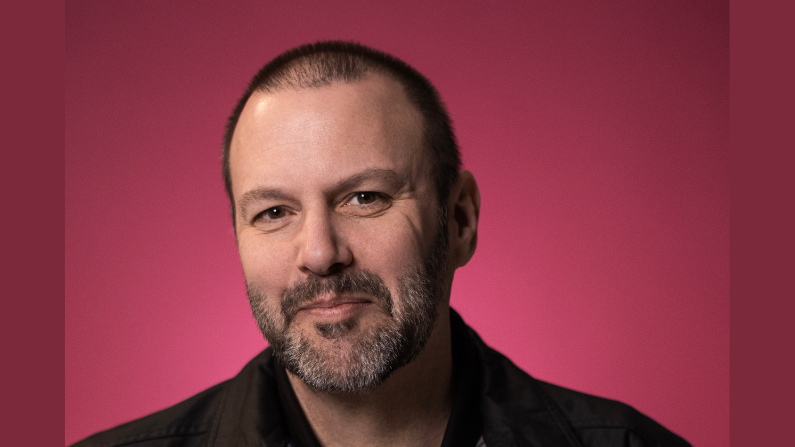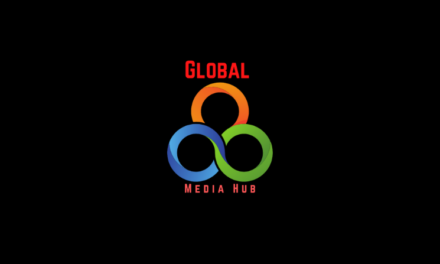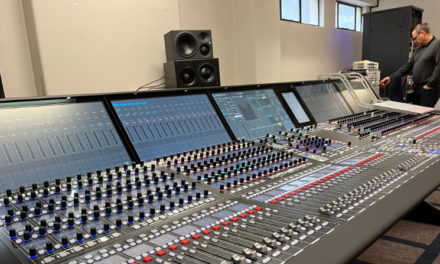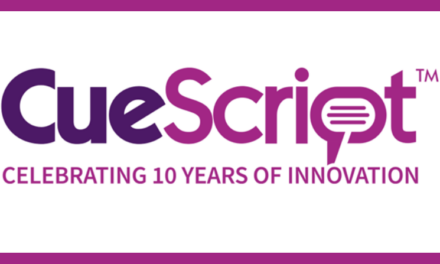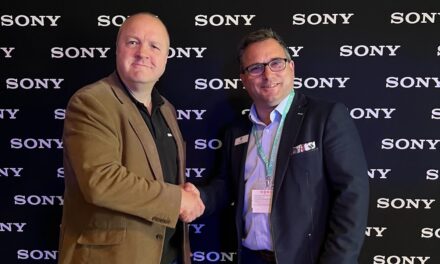Richard Landy talks about the amazing capabilities of Broadley Studios a Virtual Production Hub in the heart of London
We caught up with Richard Landy, owner of Broadley Studios, for a quick chat after his whirlwind start, to the year completing the project of turning Broadley Studios into a virtual production hub in the heart of London.
Can you give us a brief history of Broadley Studios and your involvement?
Broadley is eponymously named after its iconic central London Street in the heart of Marylebone NW1. Broadley Terrace is a historically creative street being the home of Sylvia Young drama school and Hopkins architect for many years too. No 48, where the studios are, was famously once the home of legendary Red Bus Records. The TV studio was established over 40 years ago and I first joined the business as a runner in the mid-’90s. I then returned in 2004 as a Managing Director, having carved a career in film and TV as a Head of Production for a variety of NBC shows. In 2017, I bought the Studios outright, turning around the finances, tech, and culture to where we are today. I’m always striving for innovation and growth and to keep the space creative and relevant.
In these days of remote working, how important is a central London studio?
In our work-from-home era, the need for centrally located studios is still vital for a myriad of reasons and London is the commercial and cultural hub of the country. The need for people to gather and collaborate to create great content is more important than ever before. With the advent of remote working people need connection to organisations, brands, and their colleagues. We play a pivotal role in facilitating these interactions and provide a 360-production solution for creators, clients, and businesses to get together. Being in the heart of Marylebone sets us apart from other studios, in that we’re accessible to the creative community, content producers, brands, and the tv industry folk and their contributors, in terms of our location. We’re easy to get to and we’ve built a welcoming, inclusive central hub to support everyone’s needs. Live Stream and Broadcast solution investments took priority from 2020 and thanks to the skills and tech we’ve nurtured, we deliver these at broadcast quality regardless of any complexities with the participant, global link, or platform.
You are investing heavily in new tech and particularly in Virtual Production, can you tell us how VP is changing the TV and film industries?
Virtual production is reshaping the way content is produced. It’s the game-changer we all want and need for creativity, environmental concerns, cost efficiency, and rising to the challenge of a global streaming, content-hungry, multi-platform world. How we consume TV and film has shifted radically. Combine these changes with an integration of the metaverse and AI into our everyday experience, and VP makes complete sense. For Broadley, upgrading our VP to stay ahead of the curve is where I want to be. We are an independent central London space that’s attainable for most, from the big corporates to networks, channels, production companies, brands, and creators. We aim to make sure creative innovation is widely available to all and, most importantly affordable. We see a revolution in content creation on the horizon and the possibilities are endless. It’s exciting times.
Following on from the last question how important is it for you as a studio to keep up with the Technology and how are you future-proofing the operation?
I have always wanted to make beautiful engaging pictures and stories throughout my career. I feel if you want to be making stand-out programming and fabulous content then nowadays you must be using the latest technology. The current challenge in virtual set production is matching reality, creating, in real-time, a perfect, accurate version that is undistinguished from reality itself. Because what really makes the difference is to be unable to tell whether the images being watched are real videos or digital renders. We’re tech-led studios. Investing keeps the place exciting, and the team engaged with a future-facing culture. The pace of change in tech, platforms and cultural trends helps inform our insights, direct R&D and underpin the growth trajectory. As for future-proofing, I think the pandemic helped us all find out just how dynamic we can be under pressure and deliver new workflows. We were early to pivot our full attention into live streaming. The future is wildly unpredictable, but our ability to adapt is a constant.
Could you explain the roles of some of the VP equipment you have deployed in the new studios?
Without going into too much detail the extensive R&D that has gone on over the last 2 years means we’ve invested in a total technical infrastructure overhaul. Both galleries and network are up to 4K capability. The design and build of new render engines and camera tracking systems form the backbone that supports the graphics engine at the heart of any VP system. Our chosen VP tech can combine with other render engines such as Unreal Engine to provide state-of-the-art hyperrealistic scenes, that also integrate elements that are essential in broadcast operation, such as 3D data-driven motion graphics, charts, and many others. It’s designed to enhance content creation and output for broadcast, branded content, film production or corporate presentations. Because of the high quality of the virtual sets, this technology is a real alternative to remote live outdoor shooting or physical set construction.
Can you explain the role of the Mo-Sys star-tracker in virtual production and why is this equipment so important for your business?
In short, a camera tracking system of which Mo-sys’s Star Tracker is one, places the physical camera in a virtual world and enables the filmmaker to move the physical camera and seamlessly integrate it and the subject into this virtual world. We have been testing with a Mo-sys star tracker system integrated with the studio setup for the past year and I’ve found it to be a stable and reliable piece of kit. However, we have very specific requirements here at the studio and need to be adaptable and versatile in using a variety of camera systems and lenses. As a result, we have researched our own unique workflow that bests serve our clients and their various needs. It’s been an interesting year full of challenges and some steep learning curves to integrate the best system for our clients. The world of VP is moving so fast and developing the right system to “create” with has been a journey. Mo-sys are supportive, helping us to find the right solution for our unique space. I wouldn’t hesitate to recommend their products to anyone.
What sort of projects are going to utilize the new virtual production services at Broadley Studios?
Our studios attract an incredibly diverse client base as it is, so the expansion opportunity is undoubtedly exciting. We’re primed to produce elevated, high-end, out-of-this-world filmed content for global brands. The demand for multi-channel video storytelling is huge. Broadley brings added value to branded content production with accessible rates and high-quality film made for digital distribution. The marketing machine on the big network shows now includes 360 assets on Gen Z channels like YouTube as standard. We do this already and I’m hearing exciting interest and seeing ideas coming in that would really suit the VP tech. Corporate Comms also really benefit from VP because they’ve got the added challenge of ensuring the audience stay engaged to learn. VP can do wonders for making memorable standout content whatever your area of business.
Can you discuss the challenges you have faced in setting up and running a virtual production studio in the heart of London?
The past few years have been a real journey for the studio. A drive and determination to be the best we can be is supported with a solid framework of R&D, underpinning, and steering our growth. We don’t always get it right, but making mistakes is how you learn. Right?
The pandemic, for us, was a time to get busy and create new workflows and collaborations with ground-breaking companies and organisations like The United Nations, Deep Voodoo, Freuds, and Peloton, and the chance to service a wealth of blue-chip companies with their virtual events and live streams. All paved the way and gave us the ability to adapt and grow whilst “on the job”. I must also mention our collective of tech suppliers that have helped us along the way too, most notably, Altered Images, CVP and BSEL. We’ve chewed through equipment and there have been some uninformed purchases and what we now see as unusual choices. However as with any type of change, we go through in our lives, the road to where I am today has not always been smooth, but that’s okay, it’s all part of growth.
Building work and building studios is always a challenge, especially when you are trying to get it completed especially during a global pandemic. Construction materials, equipment and manpower were hard to come by, but we rose to the challenge and managed it largely without too many sleepless nights.
How do you see virtual production technology evolving in the future, and how is Broadley Studios planning to stay ahead of the curve?
I wouldn’t like to second guess this too much or reveal too much of the game plan, but I see AI and cheaper tech revolutionizing our production workflows. Everything is so brand new now and it’s exciting to be part of the next phase of a growing and developing British film and TV industry. I’ve many plans for applications across my output of production and have the vision to make virtual production more accessible to my clients and a new generation of content creators. In an ever-changing world, eager to reduce carbon footprint, minimize movement of people and avoid waste of raw materials, then Virtual Production is a no-brainer. It fulfills our sustainability goals and gives content creators the toolbox they’ve all been crying out for. This sector is only set to grow globally, it’s truly an exciting place to be right now.
Lastly, what advice would you give to someone who is interested in getting into virtual production and making a career in this field?
Do it, do it, do it. It’s the future! The industry is set to grow exponentially here in the UK. A global population seeking quality content needs stimulating constantly and there are so many opportunities out there to take advantage of if you are thinking of a career in the creative industry. The industry is at its best right now seeking new talent from every section of society, to reflect the world we live in. It is now more accessible than ever. I’m always personally looking for new talent too, so please drop me a line.
Lego: https://www.broadley.tv/casestudies/lego-kids-build-the-future/
Too Hot to Handle: https://www.broadley.tv/casestudies/too-hot-to-handle-film-production/
Google live stream: https://www.broadley.tv/casestudies/google-pixel-live-stream-training/
FTBL Youtube series: https://www.broadley.tv/casestudies/youtube-football-show-ftbl-and-sttv/
She Hulk: https://www.broadley.tv/casestudies/she-hulk-social-media-content-green-room/

